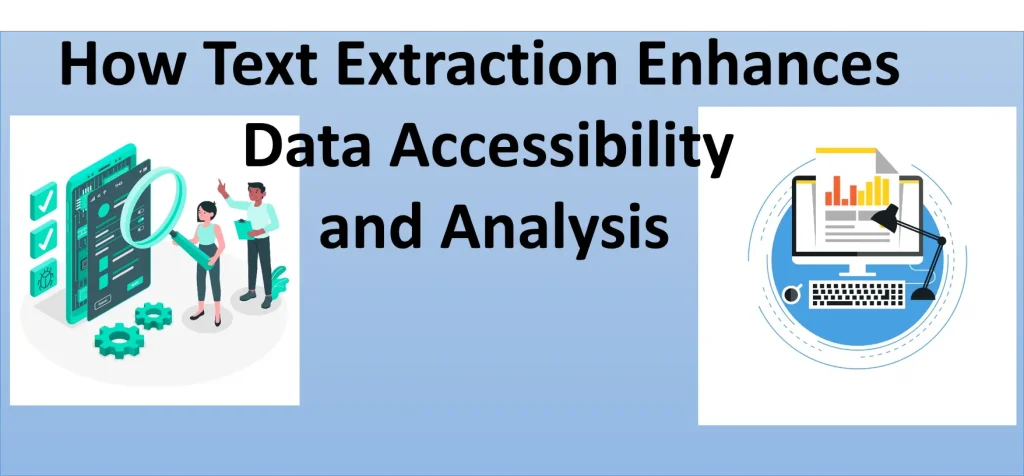How Text Extraction Enhances Data Accessibility and Analysis
In a data-driven world, organizations are inundated with unstructured information. From PDFs to handwritten notes, a large portion of valuable data remains locked in non-digital formats. Text extraction technology solves this problem by converting unstructured data into machine-readable formats, making it accessible and ready for analysis.
This article explores how text extraction improves data accessibility and analysis while transforming industries like education, finance, and healthcare.
The Power of Text Extraction
Text extraction uses Optical Character Recognition (OCR) and related technologies to pull text from images, scanned documents, or PDFs. Once extracted, this text can be searched, analyzed, and integrated into digital workflows.
With text extraction, businesses can:
- Enhance Accessibility: Make critical information easy to search and retrieve.
- Automate Workflows: Reduce manual tasks, saving time and effort.
- Improve Decision-Making: Turn raw data into actionable insights for smarter strategies.
Benefits of Text Extraction for Data Accessibility
1. Searchable Digital Archives
Text extraction creates searchable digital archives, allowing users to locate specific terms or phrases instantly.
Example: A university digitizes years of research papers using OCR. Students and faculty can now search by keywords to find relevant studies quickly.
2. Breaking Down Data Silos
Many organizations store data in silos, making it inaccessible to teams that need it. Text extraction integrates this data into centralized systems, enhancing collaboration.
Scenario: A multinational company uses OCR to digitize paper contracts, ensuring all departments have access to legal terms and compliance records.
3. Accessibility for All
Text extraction ensures information is accessible to users with disabilities by converting printed text into digital formats compatible with screen readers.
Use Case: A library uses OCR to digitize printed books, enabling visually impaired readers to access them via text-to-speech software.
Enhancing Data Analysis with Text Extraction
1. Automating Data Input
Manual data entry is time-consuming and error-prone. Text extraction automates this process, ensuring faster and more accurate data integration.
Example: A healthcare provider uses OCR to digitize patient intake forms, automatically updating electronic health records (EHRs) and reducing administrative workloads.
2. Gleaning Actionable Insights
Text extraction from images transforms raw text into structured data that can be analyzed to uncover trends, patterns, and insights.
Use Case: A financial institution extracts data from client feedback forms, analyzing sentiments to improve customer service strategies.
3. Speeding Up Decision-Making
Faster access to structured data means quicker and more informed decision-making.
Scenario: A logistics company uses OCR to process shipping data from invoices, enabling real-time updates to supply chain dashboards.
Industry Applications of Text Extraction
1. Education
Educational institutions benefit from text extraction by digitizing materials, streamlining administration, and enhancing accessibility.
- Example: A school digitizes textbooks and archives them for easy retrieval by students and teachers.
- Result: Reduced reliance on physical copies and faster access to learning resources.
2. Finance
In finance, text extraction automates workflows, reduces errors, and enables better decision-making.
- Example: Banks extract key details from loan applications to streamline approval processes.
- Result: Faster processing times and improved customer satisfaction.
3. Healthcare
Healthcare providers use text extraction to manage patient records, prescriptions, and insurance claims efficiently.
- Example: An OCR tool processes handwritten prescriptions, reducing the risk of medication errors.
- Result: Improved patient care and streamlined pharmacy workflows.
Future Potential of Text Extraction
Text extraction is poised to become even more powerful with advancements in AI and machine learning:
- Contextual Understanding: NLP will enable tools to interpret and analyze text contextually, improving accuracy.
- Real-Time Processing: Enhanced speed will allow text extraction from live video feeds or real-time document scanning.
- Integration with Big Data: Text extraction will seamlessly feed into big data systems for deeper analysis.
Vision: Imagine a future where your phone scans and analyzes a document in seconds, offering instant insights and actionable suggestions.
Our Final Thoughts
Text extraction is more than a technological convenience—it’s a transformative tool for making unstructured data usable. From digitizing archives to automating workflows, it empowers organizations to enhance data accessibility and derive actionable insights.

